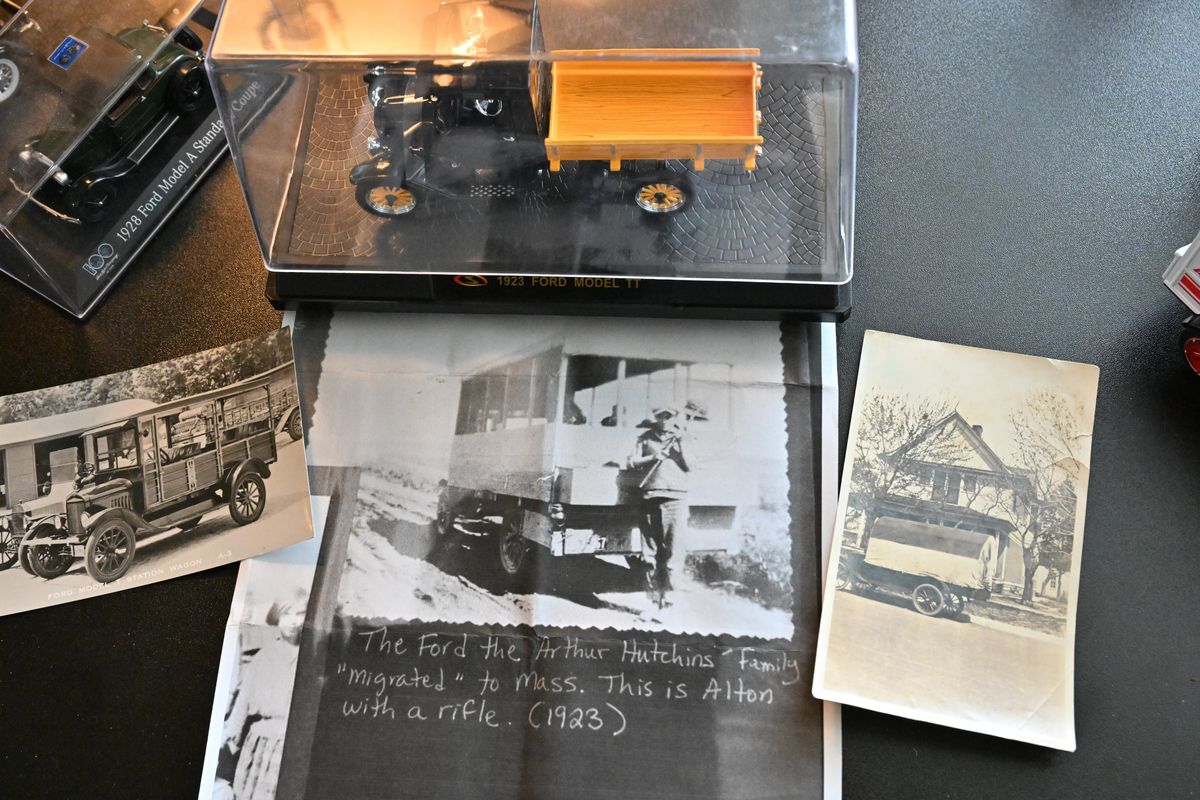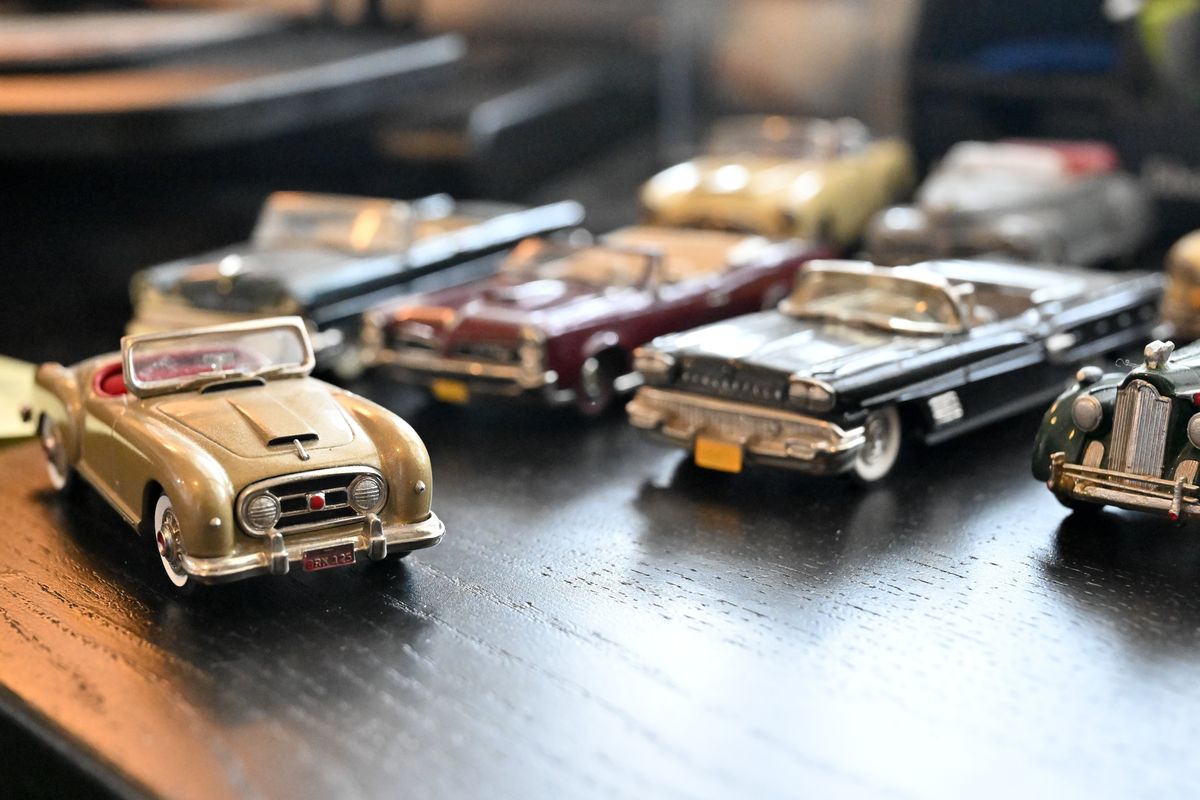The Collector: Bill Lockhart’s miniature car collection driven by friendship
Bill Lockhart’s “ragtop” section of his collection is photographed on Wednesday, April 19, 2023, at his home in Cheney, Wash. (Tyler Tjomsland/The Spokesman-Review)Buy a print of this photo
Bill Lockhart has never driven a 1953 Kaiser Manhattan, but thanks to the magic of miniatures he can see one every time he enters his home office.
The sleek sedan with dip windshields and wheel covers is just one of approximately 350 vehicles in his collection, and there’s not a single Match Box or Hot Wheels car among them.
It all started in 2000, when he was living in Napa, California, and met Ed Barwick.
“Ed had the largest Chrysler dealership in the nation,” Lockhart said.
“And he had thousands of model cars. Every week he’d give me one.”
For example, one of the rarest items in his collection is a black plastic 1974 Volvo.
“Ed was the first Volvo dealer in California and at first he didn’t have any cars to show customers. Volvo sent dealers promotional plastic models,” Lockhart said. “It’s rare because most folks gave them to their kids or threw them away.”
The Volvo is unique in his collection because the majority of his models are the smaller 1/43 scale and made of sturdy die-cast metal. All of his items are miniature versions of real vehicles.
“Most were designed for O scale electric train sets, originally,” he said.
Lockhart enjoys researching the history of the cars he collects and he especially likes models from less-common manufacturers like Kaiser Motors.
“Henry J. Kaiser was in the steel and aluminum business, but for about 10 years he made cars,” Lockhart said.
Kaiser also founded Kaiser Permanente to provide health care for his workers. He couldn’t compete with the larger automobile manufacturers, so his foray into that world was short-lived.
“I’d love to have a couple more Kaisers,” Lockhart said.
While those cars intrigue, the collector has another intense interest.
“My particular passion is Studebakers,” he said. “My dad loved them and we had a Studebaker station wagon when I was a kid.”
He has a Studebaker “push-me-pull-you” car.
“You never knew whether it was coming or going. Customers didn’t care for it.”
Far more popular was the 1956 Golden Hawk with its flashy tail fins. It was one of the first muscle cars with a top speed of 125 mph.
“They (Studebaker) were known for their styling,” he said.
Founded in 1852, the Studebaker Co. originally made horse-drawn wagons.
“That’s what travelers on the Oregon Trail rode in,” he said.
Those pioneers could never have envisioned the flashy Studebaker Lark convertible. The detailing on Lockhart’s miniature version is so exact you can feel the ridged edges of the upholstery and the shine of the chrome trim sparkles.
Back to wagons, the collector has several “woodie” models. His most recent purchase is a classic woodie with a matching Airstream trailer.
Another example is a 1946 Mercury Town and County. Lockhart pointed out the real wood panels and white wall tires.
Many of the cars in his collection were made in England by Brooklin Models.
Lockhart took a tour of the facility in Bath, England, and said it was amazing to see the handmade metal models being produced.
His favorite is a 1930s royal blue Pierce Arrow coupe.
“Who could afford a car like this in 1936?” he asked.
Other rare items include a 1953 Nash Healey, thought to be the first American sports car.
“Only a few hundred of these were made,” Lockhart said.
As he looked at the beautiful craftsmanship and design represented in the die-cast metal cars, Lockhart referred to his collection as “aspirational,” because owning the real thing is out of the average person’s price range.
He pointed to a 1953 Buick convertible.
“That would cost $200,000,” he said.
While his collection is primarily for adults to display and not children’s toys, he does have a few models originally designed for play, including three made entirely of rubber.
“They’re extremely rare because they were made for kids to play with and the rubber didn’t always outlast the kids.”
He also has a selection of Dinky cars made in England from 1934 to 1979.
“Ed actually played with them as a kid and gave them to me,” Lockhart said.
Barwick died two years ago, but Lockhart remembers him fondly and that’s what he most enjoys about his collection.
“It reminds me of my good friend Ed,” he said.


